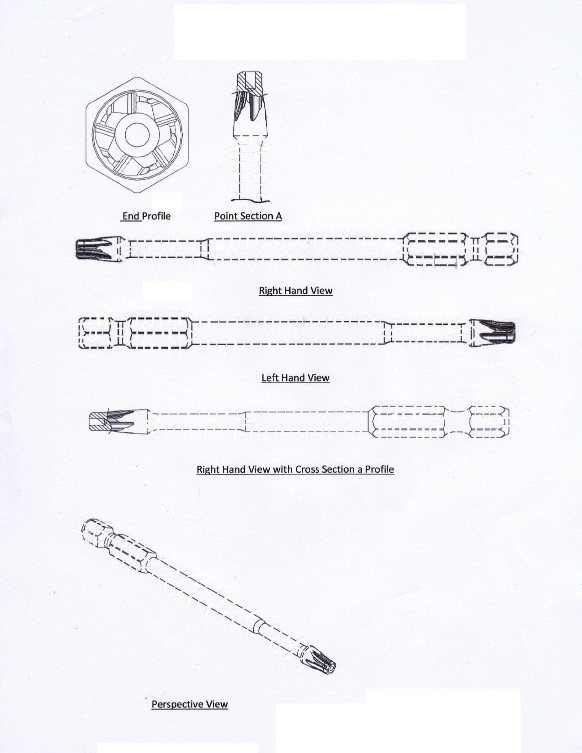Walking the Fine “Broken” Line in Designs
In many jurisdictions, it is customary for claimed features of a design to be depicted in solid lines while disclaimed features of a design are shown in broken lines.
In Australia, unless parts of the product are separable, a design will be read as being the overall article represented and the parts with broken lines are not completely disregarded.
Indeed, in Wynnes Patent and Trade Marks Attorneys Pty Ltd v. Wamlez Pty Ltd [2023] ADO 3, the Delegate concluded that the overall design “Driver bit for fastener” (Design) represented below should be considered, regardless of the line styles adopted.

The Statement of Newness and Distinctiveness (SoND) of the Design reads “Newness and distinctiveness of the design resides in the shape and/or configuration of a driver as shown in the representations.”
In interpreting its scope, the Delegate commented that there is nothing in the Design showing that the part in solid lines is separable and nothing in the SoND determines whether the dotted or solid lines are subject of the SoND. Further, the Delegate read the product name “Driver bit for fastener” for the whole product in line with the reference to “driver” in the SoND. When compared as a whole, the Design was not substantially similar in overall impression to the relevant prior art.
Although this approach may sound unusual, broken lines can be subject to interpretation in other jurisdictions, such as the UK and EU. Guidelines clearly state that broken lines indicate declaimed features of a design registration. However, this is not a rule written in stone according to established case law, and arguments can be made in connection with the use of broken lines. For instance, in the Samsung v. Apple case ([2012] EWCA Civ 1339), Apple argued that the broken lines indicated a visible border under the tablet screen, which formed part of the protected design. In the Sphere Time v. OHIM case (Case T-68/10), the design was invalidated, as the lanyard design had a clip in broken lines, which was argued to be part of the protected design, although without success.
As a result, broken lines should be used with caution, as they are relevant indicators of intended purpose, size and scale of a design, which are still part of the overall impression assessment and, if used excessively, may overturn the outcome of an infringement case, invalidate a design or narrow the scope of protection to strictly identical parts of a product.
Key Takeaways:
- Where the design application is silent on how to interpret different line forms, the design will be taken as the overall product represented regardless line forms.
- Where inconsistencies exist between the product name and reference to the product in the design application, the broader interpretation may be used.
- Different representations may be required as part of an international filing strategy.
By Serena Totino and Jian Hui Gu
